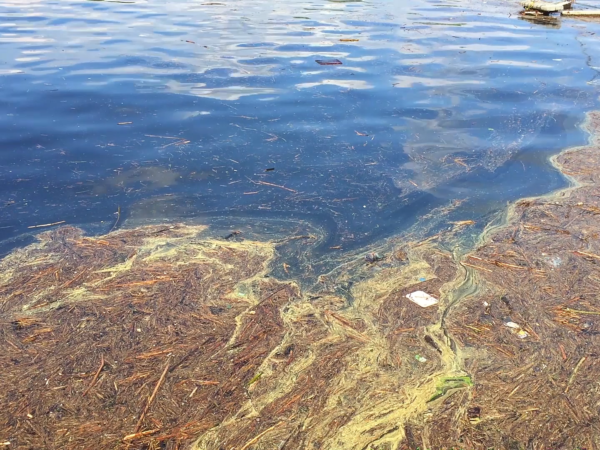
By A.J. Evans, Michigan Radio
The Great Lakes News Collaborative includes Bridge Michigan; Circle of Blue; Great Lakes Now at Detroit Public Television; and Michigan Radio, Michigan’s NPR News Leader; who work together to bring audiences news and information about the impact of climate change, pollution, and aging infrastructure on the Great Lakes and drinking water. This independent journalism is supported by the Charles Stewart Mott Foundation. Find all the work HERE.
An estimated 500,000 gallons of untreated wastewater have been discharged into the St. Joseph River.
The wastewater began flowing into the river at around 9:30 P.M. on Friday night, due to a force main break.
A no-contact health advisory is in effect for part of the St. Joseph River. People are advised to avoid any body contact with the river downstream from the Broadway Street Bridge through at least Constantine.
Rebecca Burns is the health officer at the Branch-Hillsdale-St. Joseph Community Health Agency. She said the advisory will continue until more water samples are taken, to check the levels of fecal coliform bacteria.
“The no-contact advisory will continue while the plant is working to make a more permanent fix to the problem, and is able to get some water samples to show the levels of coliform, both upstream of where the break was, as well as downstream,” said Burns. “What we’re looking for in those samples is that the levels are similar, and certainly not elevated, downstream of where the break was.”
Burns said employees at the wastewater treatment plant are currently working to make repairs.
“Right now, what they’re doing is trying to repair the break in the force main,” said Burns. “They are redirecting the flow using a trench and another pump system to the plant as a temporary measure to stop the discharge for the river.”
“When wastewater is treated through a plant, those pathogens are reduced to a level that’s considered acceptable for discharge into surface water,” said Burns. “So because it was untreated, we are advising people to have no contact with the river in order to prevent individuals from potentially getting sick from elevated levels that could be in the river.”
Catch more news at Great Lakes Now:
Harmful algal blooms appearing on Lake Erie earlier than usual
Lake Erie harmful algal bloom expected to be smaller than average
Featured image: Rand.Moment/Adobe Stock



